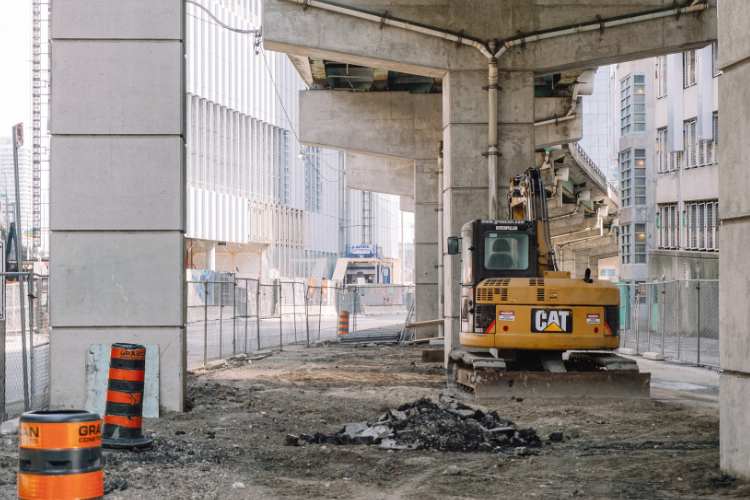Procurement is a vital component of running a successful subcontracting business. When you’ve been around long enough, you know that strong vendor relationships can carry you through tough times and save you from lost productivity. And with supply chain issues and material price hikes, dialing in procurement is more important than ever.
In the last year, CWT Construction, a leading concrete subcontractor in Texas, has made procurement a focus and transformed their process. This initiative was led by CWT’s senior management team with the goal of better managing procurement in a challenging environment. We spoke to Brent Taber, CWT CFO, about the key practices they’ve adopted to strengthen procurement at all levels – from relationships to contracts to payment strategies.
1. Have Multi-Touchpoint Supplier Relationships
It’s not just about the quality of the supplier, it’s about the quality of your relationship with them. If you don’t make that investment, it can hurt you during pre-job planning, when you can’t get the priority or volume you need because you only have surface-level relationships.
Building strong supplier relationships requires more than a cushy friendship between two points of contact. It’s not just about two salespeople having a beer together; it’s about establishing personal bonds at every level, right down to the folks handling lien waivers. You should encourage as many employees as possible to connect with their counterparts at the supplier. This is the mortar that holds companies together. When projects or economies go south, these management practices pay off for company security and wellbeing. This means spending time, making calls, having lunches, going beyond small talk and really building a partnership between your two companies.
Don’t stop at one or two suppliers though. While it can be tempting to exercise brand loyalty and stick with your favorite, diversifying your supplier base is essential. The disruptions caused by Covid proved that. When your go-to suppliers can’t deliver for any reason, you need other great options on deck. As far as safety nets go, having another supplier who bids the job with you and understands the ins and outs of it can be a huge asset.
Prioritize Relationships in Accordance With Supplier Quality and Capacity
To decide who to prioritize in your relationship-building efforts, get a crystal clear idea of their volume and scheduling capabilities. This will help with more seamless project execution. It means looking at your arsenal of suppliers and finding out: “Are they big enough to service my commitments? Who among them would be the most exposed in a crisis, like a supply chain delay or a material price hike?” Then, you can tier rank your suppliers by your idea of their capacity, and prioritize your efforts to build relationships with them accordingly.
2. Strengthen Procurement from a Contractual Perspective
- Effective procurement begins at the contract. When Brent’s company invested in top tier, high-salaried talent in the C-suite, they immediately began doing reviews of CWT’s contracts. Even from a procurement perspective, they started issuing purchase orders (POs) by line item and aligned them with the schedule of values of their prime contracts. This shift improved their financial and operational performance significantly, securing supplier pricing consistent with CWT’s contractual commitments, and it started with careful contract review.
- Lots of subs presume a degree of inflexibility in their contracts, not realizing that things like 10% retainage can be negotiated down if they’re listed at lower percentages in the prime contract. It’s best to review the prime contract for GC benefits that extend down to you, and that applies to any aspects of the contract that relate to procurement. Look into whether you can negotiate to purchase and store materials, then potentially negotiate no retainage on stored materials.
3. Help Lock in Prices with an Arsenal of Reliable Payment Options
Everyone wants price locks without paying a ridiculous premium. But it’s hard to go to a large supplier and ask for, let’s say, 8 months of price protection in a tough market; they’re battling the same conditions that make it tough for you. If you want to get price locks and be successful on a long job, then there’s a solid method to consider: offer them fast, guaranteed payment.
The ability to pay suppliers promptly can be a game-changer in securing price locks and ensuring success on projects with long timelines and dicey supply chains. It’ll also help you maintain priority customer status.
Tools like Billd can complement your bank line of credit to help you pay suppliers quickly, up front, and in full. A lot of subs struggle with pay-when-paid contracts, which can deliver payment past supplier terms and hurt their payment history with those suppliers. Billd eliminates that pressure, helping you maintain a stellar financial record with your supplier. When faced with tough markets and surging prices, having Billd in your arsenal can make a serious difference. And you want to have strong differentiators from their other customers.
Pro Tip: Paying upfront and in full can help you land percentage discounts from suppliers, who sometimes use them to incentivize faster payment. Those discounts help offset the cost of using Billd. You can also bake the cost of using Billd into your bids.
Other Tactics for Locking in Prices with Suppliers:
- Early Commitments: Try to lock in prices early in the bidding process to ensure your margins are protected. This proactive approach reduces the risk of last-minute negotiations and stressful scenarios.
- Flexibility: Be willing to pay a slightly higher price for the security of price protection. It’s an investment in peace of mind and project stability. That may mean sacrificing something like a percentage point of margin.
- Share the Value Chain: This plays into the relationships piece, but collaborate with suppliers to understand their challenges and share insights into your project’s needs. This collaboration can foster goodwill and enhance the likelihood of securing price protection.
Mastering procurement in the construction industry requires a combination of strategic supplier relationships, strong contractual agreements, and robust payment options. By following these procurement best practices, Taber believes you can position your company for success in any market condition.







